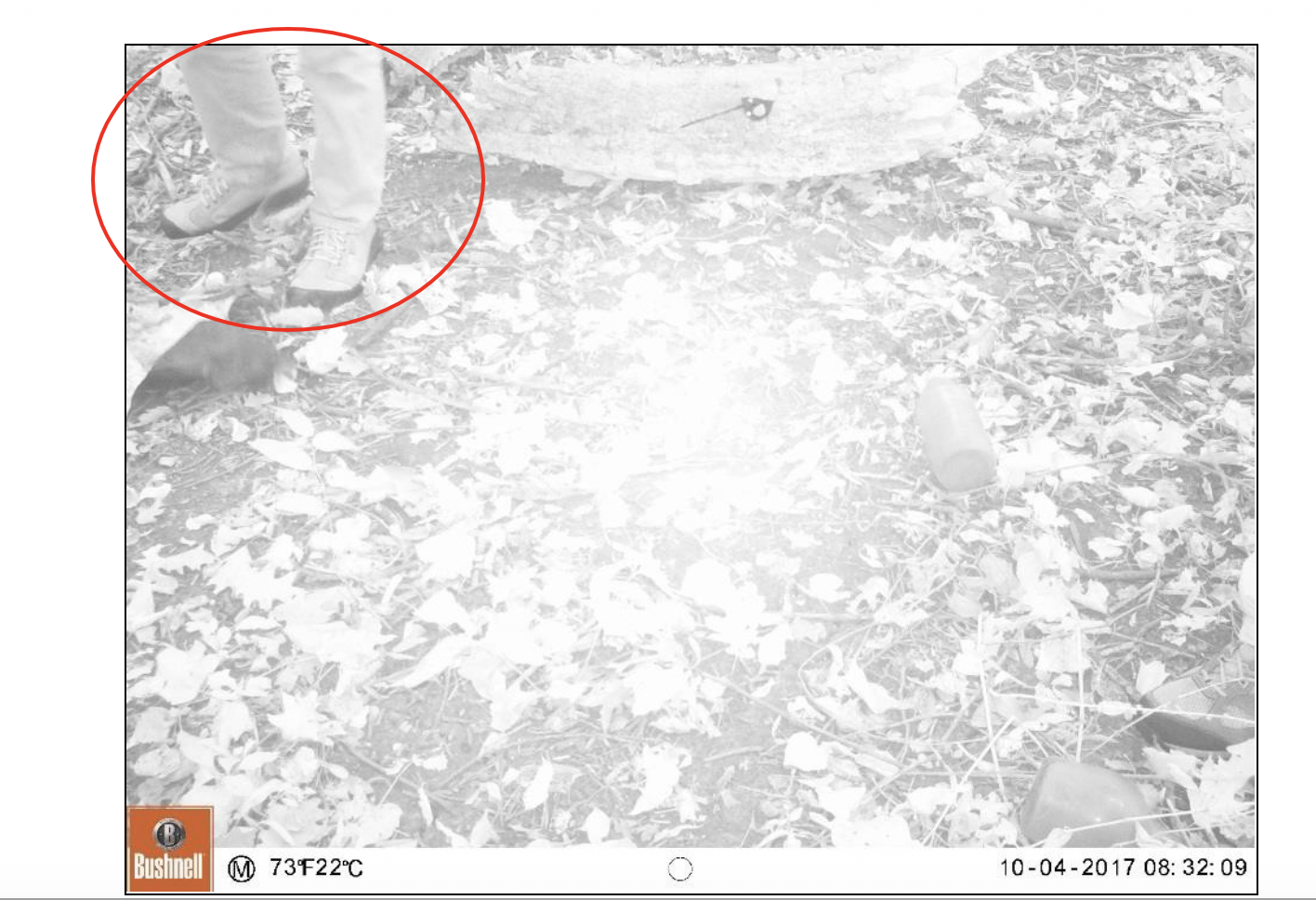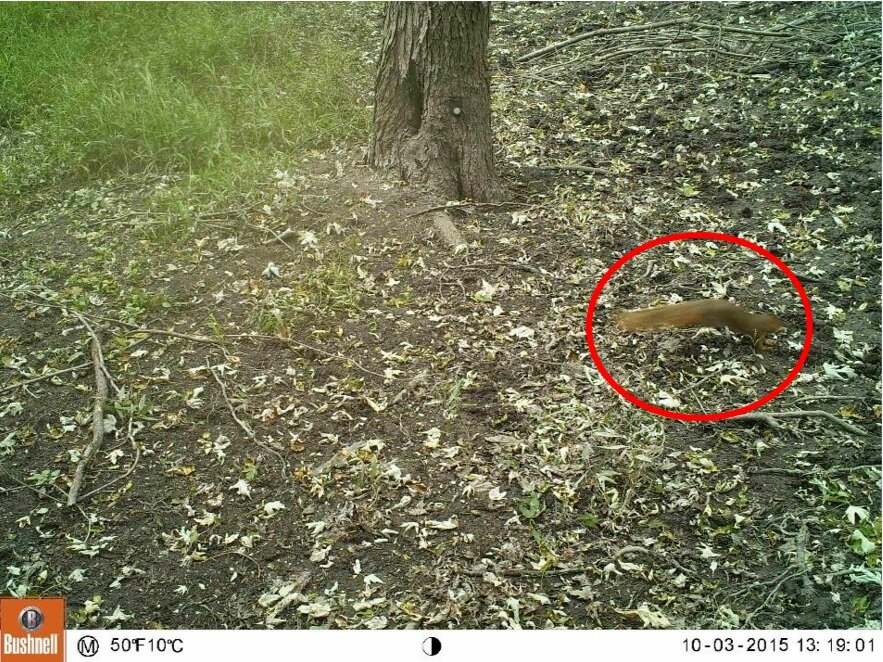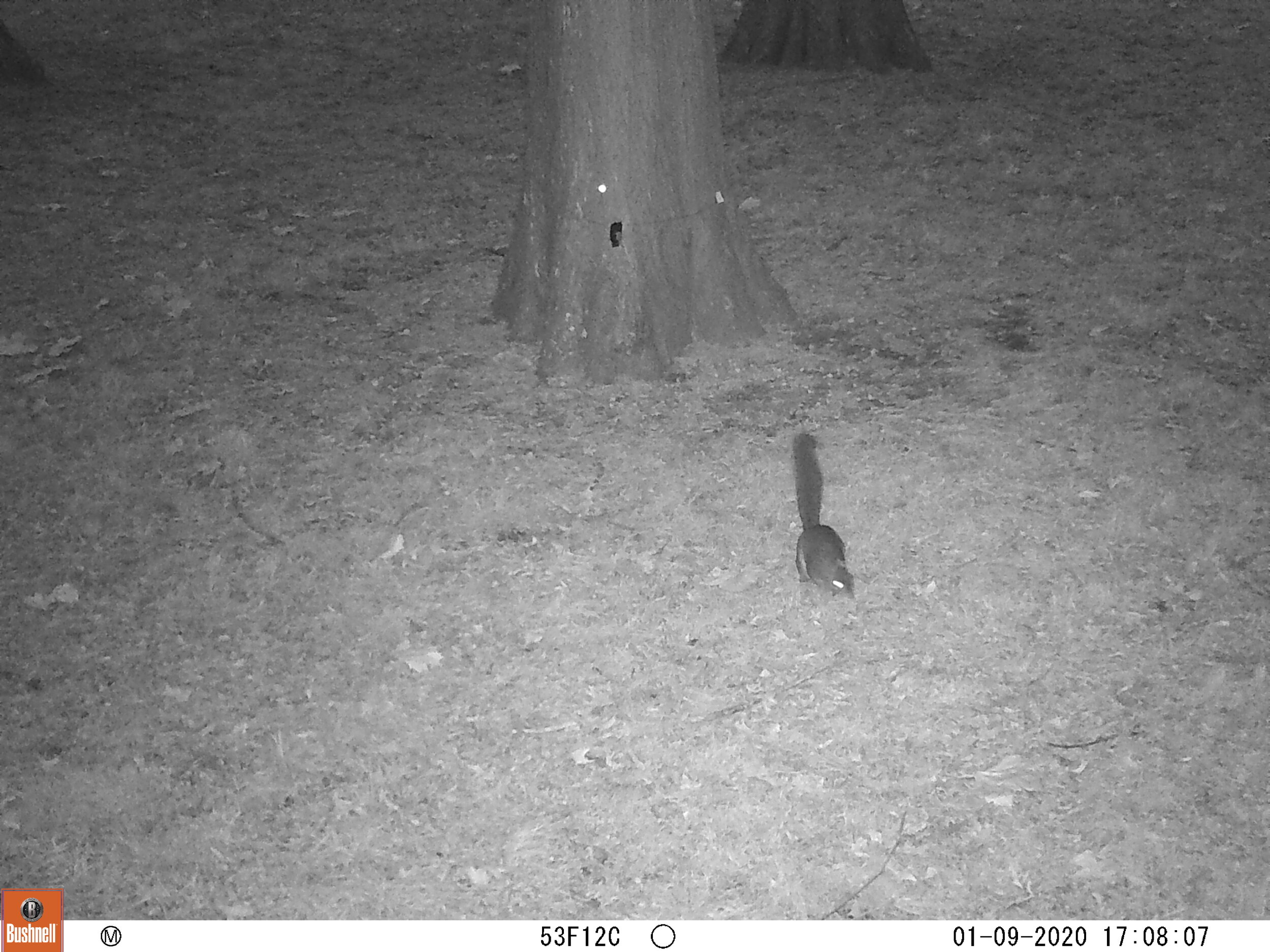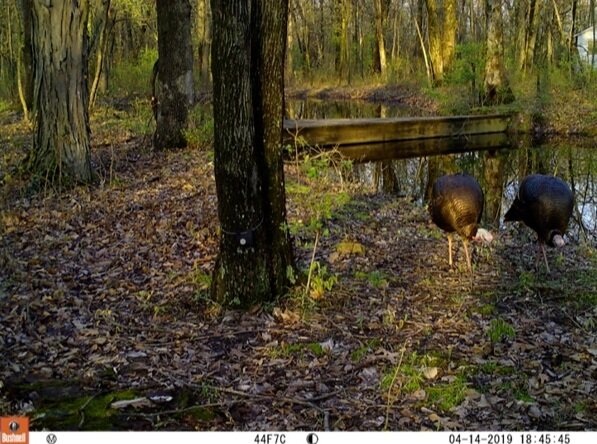Most Commonly Seen Animals
Human
Although we are trying to capture photos of wildlife, we inevitably capture many photos of humans (including photos of us as we setup and take down cameras). We can use the presence of humans in our photos, though, as an approximation for how much our sites are used by humans, which could influence how wildlife use the sites. Please mark if you see our researchers as “researcher” in the details drop down at setup and take down. There are a lot of other options in the “details” tab but most are for other cites. Please just use “researcher” or “mower” as needed.
Gray Squirrel
Common tree squirrel species that are gray-brown with white-furred bellies. Gray squirrels have fluffy tails that are whiter than those of fox squirrels. Gray squirrels can exhibit a lot of variation, but look for the white “halo” or outline around the tail. Commonly seen foraging on the ground and climbing trees. Typically diurnal.
Often confused with: fox squirrel
Key characteristics:
Primarily gray-brown coloration
Gray, bushy tail with white halo
Slightly smaller than fox squirrel
White throat and belly
Fox Squirrel
The largest tree squirrel species in North America, fox squirrels are larger than gray squirrels with mottled rust-colored fur, and a black outline around a bushy tail. Typically diurnal.
Often confused with: gray squirrel, eastern cottontail
Key characteristics:
Larger than gray squirrel
Rusty orange/red fur along chin, neck, belly, and tail (can be variable)
Bushy tail with yellowish halo lined by a dark halo
Tree Squirrel (cannot ID)
Many of the defining characteristics of Eastern Gray Squirrels and Fox Squirrels cannot be distinguished in black and white photographs. Any squirrel observed in a night-time photo should not be identified to the species level. Please choose “Tree Squirrel (Cannot ID)”.
Domestic Dog
A common household pet related to wolves, foxes and jackals. Domestic dogs can display a variety of sizes, as well as fur color and patterns.
Often confused with: coyote, red fox, gray fox
Key characteristics:
Typically has a collar
May be on a leash
Often accompanied by a human
Please indicate if the dog is off or on leash. After entering “dog” as the species, use the Details section to select “on leash,” “off leash,” or “no collar.” If a dog is accompanied by our crew members, please select “researcher.”
Domestic Cat
A common household pet with a small build, a long tail and small pointed ears. Domestic cats display a variety of fur color and patterns.
Often confused with: raccoon, opossum, skunk
Key characteristics:
Long, furry tail
Variety of colors and patterns of fur
Short snout
Pointed ears
Raccoon
Stocky, brown-gray furred animal that appears to be wearing a black mask around its eyes. Other notable features include a rounded back, finger-like clawed toes, and a black-ringed tail. Raccoons are nocturnal, but photos during daylight hours, especially early morning and late afternoon are not uncommon.
Often confused with: opossum, domestic cat
Key Characteristics:
Black face mask
Ringed tail
Coarse, dark gray fur with a black halo
Round form with hunched back
Head often lower to ground than rump (due to their hind limbs being longer than their forelimbs)
Virginia Opossum
Adept tree climbers with clawed feet and an opposable big toe on rear paw. Opossums have a gray body, a white face with a pink nose, dark eyes, round black ears, and a long, hairless tail. Generally nocturnal, but photos during daylight hours are not uncommon, especially during the winter.
Often confused with: rat, raccoon, domestic cat, muskrat
Key Characteristics:
Long, thick, hairless beige tail
White, triangular face with a pink nose
Black ears
Light gray, fuzzy fur contrasting with dark legs and hairless feet
Usually low to the ground, but capable of climbing trees
-Extra sets of glowing eyes on back of opossum may indicate babies (females opossums carry young in a pouch on their abdomen or on their back)
Coyote
The largest wild canid in St. Louis and far larger than red or gray foxes. Fur can be mottled gray or brown and the tail may have a black tip. Coyotes in St. Louis can have mange, a skin disease caused by a mite that results in hair loss and poor body condition. Generally nocturnal, but daytime photos are not uncommon.
Often confused with: domestic dog, red fox, gray fox
Key Characteristics:
Elongated snout
Pointed ears
Black-tipped tail
Light gray to dull yellow mottled fur
Dog-like features
About 2 feet tall
No presence of dog collar
White-tailed Deer
A large, tan-colored, short-haired animal related to moose and reindeer. Deer have large ears and short fluffy tails that are white on the underside. Males are called bucks, females are called does, and the young are called fawns. Fawns have white spots, and adults may have antlers depending on the time of the year. Active both during day and night (crepuscular). Please indicate if antlers are present, or young present in the “Details” tab. Do not use any other details.
Often confused with: coyote
Key Characteristics:
Tan/brown fur
Long, thin legs
Long ears
Short, tan tail with white on the underside
Large eyes
May have antlers
Tallest wildlife species we see
Young (fawns) have white spots on backside
Striped Skunk
Skunks have a single thin, white stripe down the middle of its face and two thicker white stripes originating at the top of its head running down either side of its back into a thick, bushy tail. Typically nocturnal.
Often confused with: domestic cat
Key Characteristics:
-Cat-sized with shorter legs
-Black fur with white stripes down back
-Long, bushy tail, often with black and white fur
Small, triangular head
Red Fox
A small to medium-sized animal with red/brown fur along its head and back, and white fur on its belly and typically at the tip of its bushy tail. Characterized by black fur on the back of their ears and legs ("socks"). Much smaller than a coyote, but a little larger than a gray fox.
Often confused with: coyote, gray fox, domestic dog
Key Characteristics:
Black socks and black-tipped ears
Red fur (most common color, but can show some variation)
Smaller stature than a coyote
Long, bushy tail with a white tip
White throat, chest, and belly
Wild Turkey
A medium to large sized ground dwelling bird. It has a large fan-shaped tail. Long stocky pink or gray legs; short rounded wings; bare head and neck and a small down curved bill. This is the only bird species we ID to species. All other birds, just mark as “Bird” and write the species in the comments if you know it.
Often confused with: Hawk, owl
Key Characteristics:
Large, plump body
Bare head and neck
Large fan shaped tail
Iridescent bronze body feathers with white bars on its wings
Armadillo
A small to medium-sized animal has sides, back, tail, and top of head are covered with bony dermal plates that are covered by a leathery skin. The head has 1 large plate from which the ears protrude the body has 2 large plates with a series of 9 smaller, moveable “bands” around the midsection; the short legs and tail have other series of plates. It does not have furry skin but only small amount of hair between the hardened plates.
Often confused with: black and white groundhog; hard to confuse with anything else
Key Characteristics:
No fur covering body
Short legs, large claws
Small protruding ears
Sides, back, tail, and head covered in bony plates
9 bands of shell-like skin on back





























